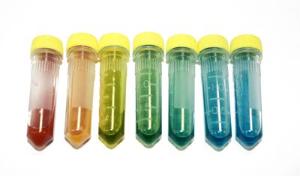Fermentation facts; Plus a free handout from AccessScience
Access to this content is available to Ward’s World readers for free from McGraw Hill’s AccessScience, an award-winning, digital STEM resource that provides immediate, authoritative answers to students’ thirst for scientific knowledge on topics such as climate change, virology, pollution, and more. Ward’s World and McGraw Hill have partnered to offer educators a no-obligation, free trial subscription to this product. Request your free trial today and discover how valuable AccessScience can be for you and your students.
High School
Human-caused fermentation dates back to 7000 BC after an analysis of ancient pottery showed a fermented beverage of rice, honey, and fruit.1
Fermentation is a metabolic process that transforms and preserves food using common microorganisms such as bacteria, yeast, and mold. In simplest terms, fermentation is the process by which a microorganism converts carbohydrates, such as starch or sugar, into acids, gases, or alcohol in the absence of oxygen. Fermentation is the opposite of respiration, a process in which oxygen converts carbohydrates into energy.
The most common types of fermentation are alcoholic and lactic acid. Both are oxidation-reduction reactions and involve glycolysis (the breakdown of glucose by enzymes, releasing energy and pyruvic acid). Ethyl alcohol is the primary end product of alcoholic fermentation, while metabolite lactate is the by-product of lactic fermentation.
Fermented food
Fermentation continues to top food trend lists, health movements, and restaurant menus, driving a surge of interest in fermented foods; the Food Institute forecasts a compound annual growth rate of 7.34% by 2026. Fermented foods are “foods or beverages produced through controlled microbial growth and the conversion of food components through enzymatic action.”2
Some popular fermented foods include:
What’s the difference between probiotic and fermented foods?
A probiotic is a product (food or supplement) containing a known bacteria with clinical evidence of health benefits. In comparison, fermented food is simply food that has undergone a fermentation process.
And last but not yeast, not all fermented foods are probiotics, and not all probiotics are fermented. Some fermented foods will contain live microbes, but they may not fit the specific requirement of having clinically-supported health benefits. In contrast, other fermented foods may not contain live microbes by the end of the fermentation process.
Download McGraw Hill’s AccessScience article, Fermentation, to develop your lesson plans that help students understand the chemical breakdown of organic substrates, fermentation by-products, and anaerobic organisms. The free download also includes assessment questions and answers you can use to test student understanding.
1. Proc Natl Acad Sci U S A. 2004 Dec 21; Fermented beverages of pre-and proto-historic China 2. Marco M.L., Heeney D., Binda S., Cifelli C.J., Cotter P.D., Foligné B., Gänzle M., Kort R., Pasin G., Pihlanto A., et al. Health benefits of fermented foods: Microbiota and beyond.
Recommended Products
[StartProductBlock]

Ward's® Fermentation Kit
Re-create the food preservation process and alcohol production by fermenting fruit or juice.
[EndProductBlock]
[StartProductBlock]

The Future of Biofuels - Alcohol Fermentation, Edvotek
Produce ethanol biofuel through yeast fermentation of sugar in different environmental conditions.
[EndProductBlock]
[StartProductBlock]

Optimized Fermentation of Yeast
Students determine the optimum food source for yeast by monitoring growth rate and respiration.
[EndProductBlock]
